Noticias

Blog
Horse Transport: The Essentials for a Safe Travel
Transporting a horse is not something you can take lightly. Whether it’s for a competition, a change of stables, or just a leisurely ride, certain precautions are essential to ensure the safety and well-being of your four-legged companion. Discover our complete guide for a stress-free journey, for both you and your horse!
1. Protecting the horse’s legs and sensitive areas
During transport, even on a short trip, a horse can easily lose balance or injure itself while moving around in the truck or trailer. Rubbing, slipping, and bumps are all very real risks.
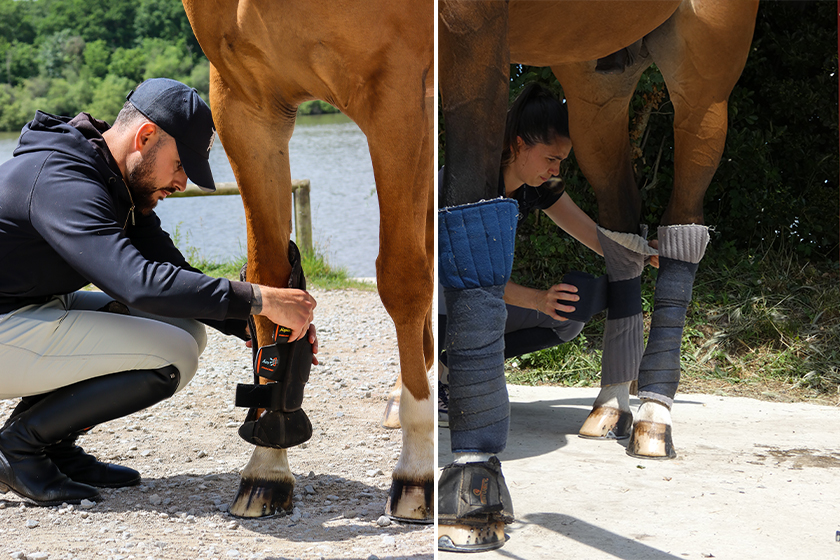
What protective gear should you use?:
- Travel boots: Easy to put on and offering solid protection for the legs.
- Stable bandages with leg wraps: A more technical option that requires proper know-how to apply correctly.
- Bell boots: To prevent injuries around the hooves.
- Tail guard / Poll cover: Ideal for avoiding rubbing against the vehicle’s walls or ceiling.
Every horse is different, so try out a few options to see what works best for yours. The most important thing is ensuring they travel safely.
2. Plan Ahead for the Weather, especially in Hot Conditions
Before hitting the road, always check the weather forecast. In summer, poorly planned transport can quickly become uncomfortable, or even dangerous, for your horse.
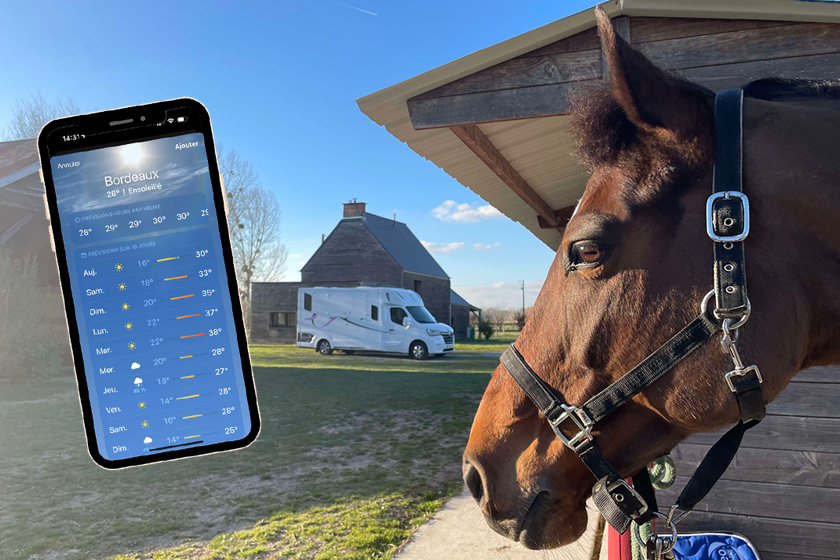
Why is it important?
- Adjust the departure time: Travel early in the morning or later in the evening to avoid peak heat.
- Plan regular breaks: Give your horse time to rest and cool down during longer journeys.
- Ensure good ventilation: A well-aerated horsebox or trailer helps reduce heat stress and keeps your horse more comfortable.
✅ Proper planning ensures your horse’s comfort and safety throughout the entire journey.
3. Properly preparing your horsebox or trailer for the trip
The quality of the vehicle plays a key role in the comfort of the transport.
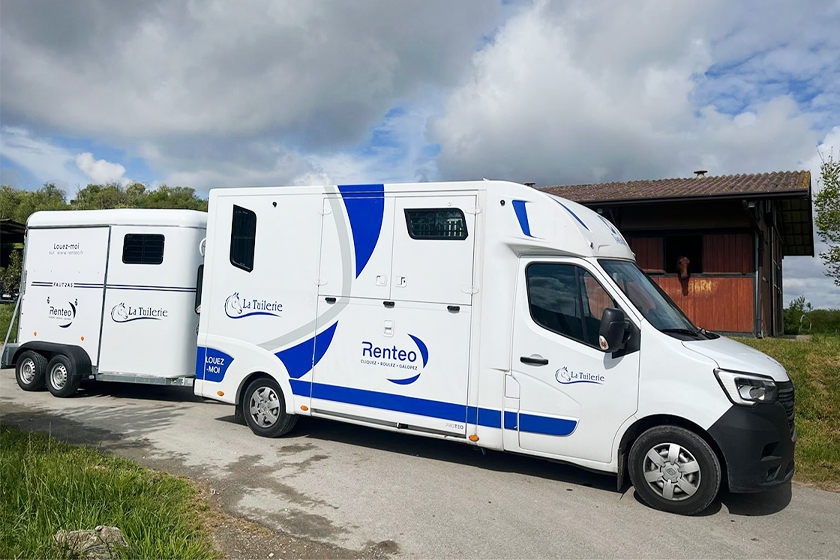
Good practices:
- Choose the right setup (stall or sport) based on your horse’s balance and habits. Théault horse box offer both configuration options.
- Ensure proper ventilation: essential to reduce stress and prevent heatstroke
- Drive smoothly: avoid sudden braking and sharp turns.
- Take a break every 4 hours: offer water, hay, and perform a quick health check.
A well-managed journey means a calmer horse upon arrival.
4. Never neglect hydration and hay.
A horse can become dehydrated quickly, even if it seems calm. Stress, heat, or the length of the journey can all affect its balance.
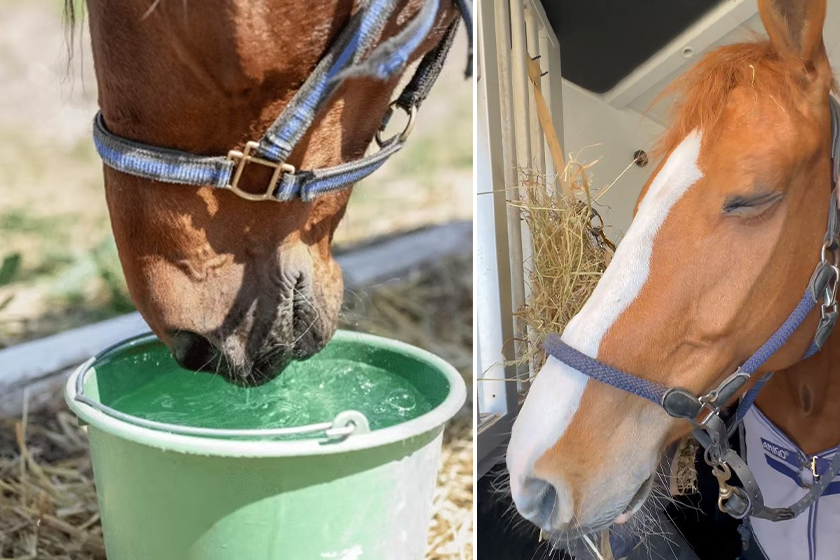
Hay, a valuable ally:
- It keeps the horse occupied and reduces boredom.
- It promotes salivation, which helps with hydration.
- It supports regular digestion and gut function.
And water?
- Offer water at every break (about every 4 hours).
- In case of heat or stress: add electrolytes to help replace lost minerals.
5. Documents you must never forget
Forgetting a document can be costly, even for a short trip.
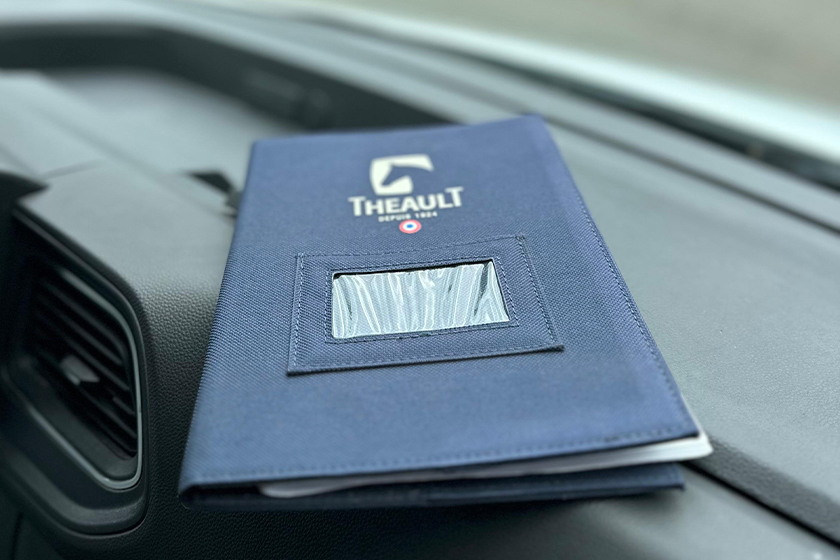
Must-have documents with you:
- The horse’s passport: mandatory and should be kept within easy reach in the vehicle.
- Proof of ownership or a written agreement: if you’re transporting a horse that isn’t yours.
For trips over 65 km or for commercial purposes:
- Certificate of Competence for Animal Transport (CoC) for the driver or accompanying person.
- Transport authorization.
- Vehicle approval is required if the journey exceeds 8 hours.
In summary: a well-prepared transport = a calm horse
From protective gear to comfort management, hydration, and mandatory documents, every detail matters to ensure the best possible conditions for your horse’s journey.
☞ Remember: your horse’s safety starts even before you turn the key in the ignition.

